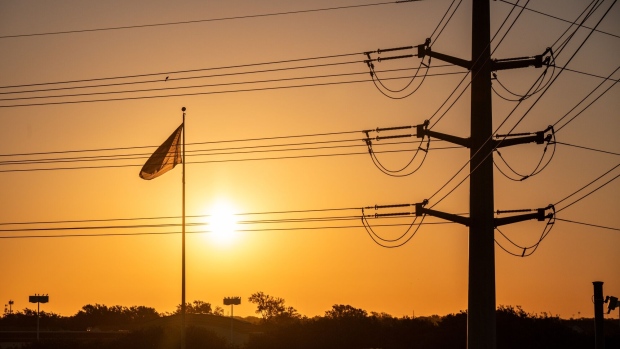Dec 4, 2023
New Texas Power Rules Raised Costs by $12 Billion, Watchdog Says
, Bloomberg News

(Bloomberg) -- A watchdog for the Texas electric grid said new rules this year have led to more than $12 billion in additional costs, up from a previous estimate of $8 billion over the summer, the latest development in a contentious debate over power reserves in the Lone Star State.
In early June, the Electric Reliability Council of Texas, or Ercot, started setting aside a new pool of reserves that can respond quickly to cover shortfalls, as when solar supply drops at sunset. But that change also kept cheap power generation sitting idle during hot summer days. The result: artificial scarcity, which sent real-time power prices soaring, according to Potomac Economics, which serves as Ercot’s independent market monitor.
“I don’t want to exaggerate how bad this is, but this is the worst performance we’ve ever seen since the beginning of organized electricity markets almost 25 years ago,” David Patton, Potomac’s president, told an Ercot stakeholder committee — including power plant owners, consumer advocates and consultants — on Monday. “I’ve never seen anything remotely this bad.”
Ercot officials disputed elements of Potomac’s analysis – and ultimately received a vote of confidence from most stakeholders present for the method it’s using to procure reserve supplies. In a statement, Ercot officials stressed that the $12 billion figure didn’t represent direct costs, but an estimate of what it might have saved if it hadn’t reserved extra capacity, assuming other conditions — such as the level of energy commitments from generators — remained unchanged.
Other factors, such as a historically hot summer, contributed to the amount, Ercot said. It defended its method for procuring backup resources but said a separate conversation around its new service, called Ercot Contingency Reserve Service, or ECRS, is warranted.
Potomac previously estimated that ECRS increased real-time energy costs by $8 billion over just three months’ time. But on Monday, Patton said new calculations through Nov. 27 put the number closer to $12.5 billion.
He said the increased costs for the wholesale market, which will eventually trickle down to consumers, amount to the same as tacking on some $400 “for every man, woman and child in Texas.”
Since questions arose about the new reserve service, Texas policymakers and market participants have been debating how much backup power supply is too much – and whether Ercot is managing such reserves appropriately. Last month, Carrie Bivens resigned as the director of Potomac Economics’ independent market monitor for Ercot after her original analysis showing $8 billion in additional costs drew both praise and criticism.
Read more: Texas’ New Electricity Rules Sent Grid Prices Soaring
One critic was Ercot Chief Executive Officer Pablo Vegas, who told Bloomberg in October that the takeaway from the analysis had been misconstrued. Others said Bivens failed to incorporate other factors that drove prices to spike and that higher prices might have been justified, because they pointed to what the market deemed was required to meet demand while also ensuring reliability.
But Bivens maintained that her analysis aimed to isolate the effect of ECRS alone, and on Monday, Patton said the market monitor’s latest report showed Ercot’s methodology for procuring backup reserves “is not based on sound reliability criteria.”
“As far as I can tell, this is so completely unprecedented,” Patton said. “There’s no way to pretend that these are real costs.”
Still, ECRS is not without its fans, many of whom say it was a key reason Ercot made it through a historically hot summer with no major emergencies. Most of the group that met Monday endorsed Ercot’s method for procuring services like ECRS — with the understanding there may be further review of ECRS before next summer. Ercot’s board is expected to vote on the approach later this month.
(Updates with Ercot statement beginning in fourth paragraph)
©2023 Bloomberg L.P.






